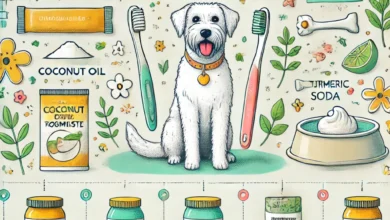
Learn how to make homemade pet toys for dogs, cats, birds, and small pets. Easy DIY pet toy ideas using household items!
Making homemade pet toys is a fun, budget-friendly way to keep your pets entertained while ensuring their safety. Many store-bought toys contain chemicals or small parts that can harm animals. By creating DIY pet toys, you can customize them based on your pet’s preferences and play style while using safe, pet-friendly materials.
In this guide, we’ll explore a variety of homemade pet toys for dogs, cats, small pets (like rabbits, guinea pigs, and hamsters), and birds. These ideas will keep your furry (or feathered) friends happy and engaged whether you’re looking for interactive, chewable, or treat-dispensing toys.
Homemade Dog Toys
Tug-of-War Rope Toy
Materials Needed:
- An old T-shirt, towel, or fleece fabric
- Scissors
Instructions:
- Cut the fabric into three long strips.
- Tie a knot at one end.
- Braid the strips tightly and secure them with another knot at the other end.
Why It Works:
Tug-of-war is a great way to strengthen your dog’s jaw and provide mental stimulation.
Frozen Treat Ball
Materials Needed:
- A rubber ball with holes (like a Kong)
- Peanut butter or yogurt
- Dog treats
Instructions:
- Fill the ball with peanut butter or yogurt.
- Add some dog treats inside.
- Freeze for a few hours before giving it to your dog.
Why It Works:
This treat-dispensing toy keeps dogs entertained, especially on hot days.
Sock and Bottle Crunch Toy
Materials Needed:
- An old sock
- An empty plastic water bottle (without cap and label)
Instructions:
- Insert the bottle inside the sock.
- Tie a knot at the open end to secure it.
Why It Works:
Dogs love the crunching sound, making this a stimulating and engaging toy.
How Often Should a Pet Be Vaccinated? A Complete Vaccination Guide
Homemade Cat Toys
Feather Wand Toy
Materials Needed:
- A wooden stick or chopstick
- String
- Feathers or fabric strips
Instructions:
- Tie one end of the string to the stick.
- Attach feathers or fabric strips to the other end.
- Wave the toy around and watch your cat pounce!
Why It Works:
Cats love to chase moving objects, which helps satisfy their hunting instincts.
Catnip Sock Toy
Materials Needed:
- An old sock
- Catnip
- Cotton or fabric scraps
Instructions:
- Fill the sock with cotton or fabric scraps.
- Add a small amount of catnip.
- Tie the sock closed.
Why It Works:
Catnip excites most cats, making this a fun, interactive toy.
DIY Paper Ball
Materials Needed:
- A piece of paper or aluminum foil
Instructions:
- Crumple the paper into a tight ball.
- Toss it for your cat to chase and bat around.
Why It Works:
A simple and cost-effective way to engage your cat in playtime.
Homemade Small Pet Toys (Rabbits, Guinea Pigs, Hamsters, etc.)
Cardboard Tube Treat Puzzle
Materials Needed:
- An empty toilet paper roll
- Hay or treats
Instructions:
- Fill the cardboard tube with hay or small treats.
- Fold the ends to keep the treats inside.
Why It Works:
This toy encourages natural foraging behavior.
DIY Chew Sticks
Materials Needed:
- Apple tree branches (safe for small pets)
- A knife (for cleaning)
Instructions:
- Wash and dry the branches.
- Cut them into small pieces.
Why It Works:
Small pets need to chew to keep their teeth healthy and trimmed.
Foraging Box
Materials Needed:
- A small cardboard box
- Hay or shredded paper
- Treats
Instructions:
- Fill the box with hay and hidden treats.
- Let your pet dig and search for the treats.
Why It Works:
This engages your pet’s instinct to forage.
Homemade Bird Toys
Hanging Foraging Toy
Materials Needed:
- A small cardboard box
- Birdseed
- Twine
Instructions:
- Cut small holes in the box.
- Fill it with birdseed.
- Hang it in the cage using twine.
Why It Works:
This toy encourages birds to peck and forage for food.
Colorful Bead Swing
Materials Needed:
- A wire or sturdy string
- Wooden beads (bird-safe)
- A small wooden stick
Instructions:
- Thread the beads onto the wire or string.
- Attach a wooden stick at the bottom as a perch.
- Hang it in the cage.
Why It Works:
Birds love swinging and climbing, making this an enriching toy.
Conclusion
Homemade pet toys are a great way to keep your pets entertained, save money, and ensure safety. Whether you have a playful dog, a curious cat, a small furry friend, or a chirping bird, DIY pet toys can provide hours of fun while catering to your instincts.
Try making some of these homemade pet toys today and see which ones your pet loves the most! 🐾
FAQs About Homemade Pet Toys
What are the safest materials for DIY pet toys?
Use non-toxic, pet-safe materials like cotton fabric, untreated wood, paper, and natural rubber. Avoid small, easily swallowed pieces.
How often should I replace homemade pet toys?
Inspect toys regularly for damage and replace them if they become unsafe especially chew toys.
Are homemade pet toys better than store-bought ones?
Homemade pet toys can be just as fun and safe as store-bought ones, and they allow for customization to suit your pet’s needs.
Can I wash DIY pet toys?
Yes! Fabric toys can be machine-washed, and rubber or plastic toys can be cleaned with warm water and mild soap.
What if my pet doesn’t like the toy?
Try different textures and materials. Some pets prefer soft toys, while others enjoy interactive or chewable toys.
Is it safe to use recycled materials for pet toys?
Yes, but make sure they are clean and free from harmful chemicals, dyes, or sharp edges.


